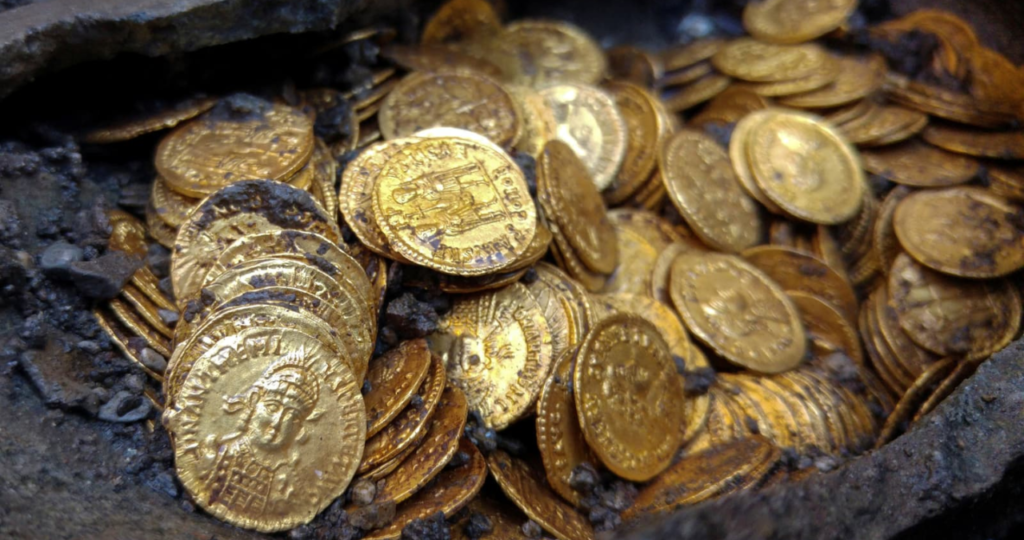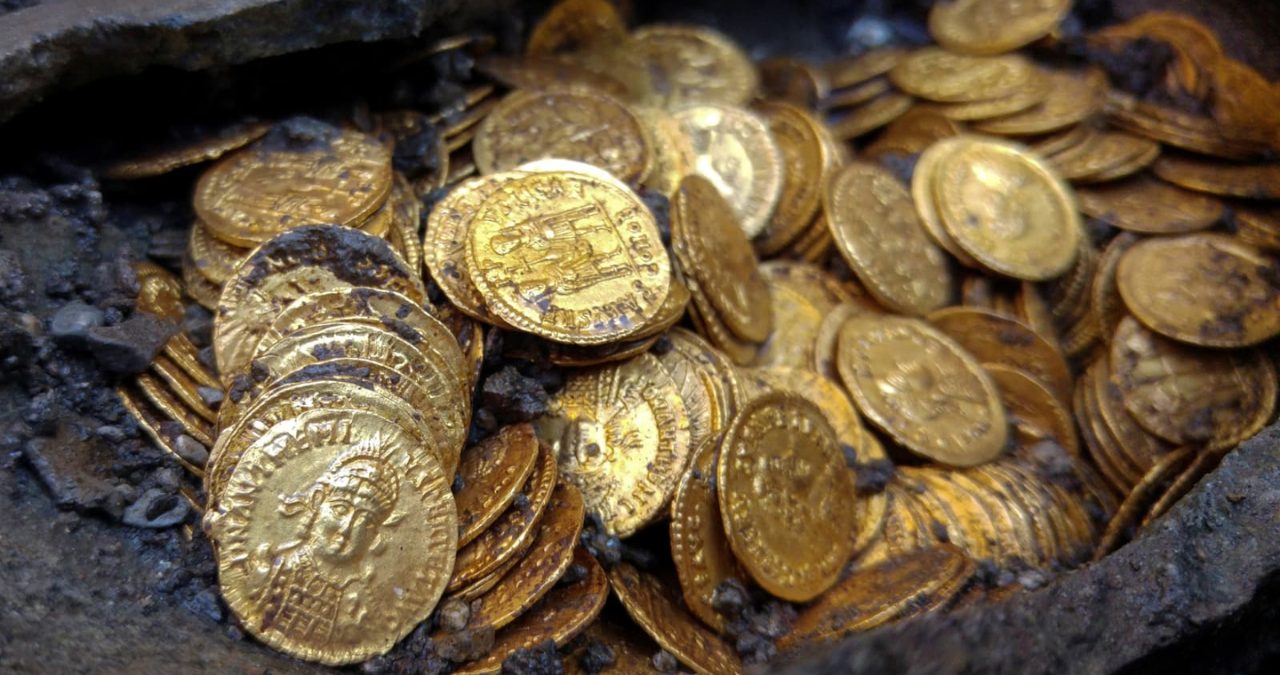When George Ridgway looks back at his childhood, he remembers being fascinated with history. Growing up in Ashbocking, near Ipswich, his love for treasure hunting began early, inspired by adventure movies like Indiana Jones. As a young boy, he often explored his family’s farm in Suffolk, searching for fossils and relics.
Most of the time, George found nothing more than fossilized shells or interestingly shaped stones. But those early days of curiosity eventually led him to an incredible discovery—748 gold and silver Roman and Iron Age coins.
The First Steps Toward a Lifelong Passion
George’s real journey began when he received his first metal detector at the age of 12, a gift from his grandmother. This gift unlocked a passion for history, particularly Roman history. The fact that a Roman road passed through their farm only fueled his imagination.
“I often daydreamed about Roman soldiers walking down the road,” he recalls, “and I’d set off with my metal detector, hoping to find a piece of that ancient world.”
At 16, George had his first major find—a Roman coin. It was a sestertius of Marcus Aurelius, the Roman emperor. The moment he held that coin in his hand, he described it as feeling “like magic.” It was a tangible link to the past, deepening his desire to continue searching for more hidden treasures. Little did he know, this was only the beginning.
8 Rare Coins You Might Have Without Knowing Their True Value
From Passion to Profession
Now 34 and a trained archaeologist, George’s passion for history became his profession. Over the years, he honed his skills and knowledge, blending his love for treasure hunting with formal archaeological training. This background allowed him to dive deeper into the history of Suffolk, with particular interest in areas rich in Roman heritage.
The Discovery of a Lifetime

Years of research led George to a specific area at Helmingham Hall, Suffolk, that had piqued his interest. He had studied Roman roads and ancient trackways across Suffolk and, one day, noticed a peculiar mark on a map near a field pond. Intrigued, he decided to investigate the site.
The very next day, he headed to the location with his trusty metal detector. Within less than 15 minutes, he unearthed two Roman brooches—evidence that people had lived in the area over 2,000 years ago. Excited by the find, George continued searching the field. Not long after, his detector signaled another hit. As he dug into the soil, he uncovered his first coin—a denarius of Julius Caesar from 46-47 BC. The rush of adrenaline he felt was indescribable.
How 6 Rare Coins From the 1800s Could Bring You a Fortune!
The Moment of Realization
What happened next was beyond anything George could have imagined. Coin after coin started appearing from the ground. Within a few hours, he had uncovered 180 coins, mostly denarii. “As I held those ancient coins in my hand, I looked up to the sky, overwhelmed by the realization that I had found a Roman hoard—a dream I had held since I was a teenager,” he says. It was a surreal moment where his lifelong passion and his career intersected.
Over the next several months, George continued excavating the site, eventually recovering 748 gold and silver coins from the Roman and Iron Age periods. Among them was a rare gold aureus of Claudius, the emperor who led the invasion of Britain. For George, finding that coin was particularly special as it linked his discovery to such a significant period in British history.
Preserving and Sharing History

Finding such a large hoard came with great responsibility. Following the law, George reported the discovery to the authorities, and the coins were declared treasure. A portion of the hoard was purchased by a museum, while the rest was returned to him and the landowner.
They later auctioned off the remaining coins, which fetched over £132,000, far exceeding the original valuation. For George, however, metal detecting has never been about the money. He explains:
“It’s about uncovering pieces of history that have been hidden for centuries. Holding a coin or artifact that someone used 2,000 years ago is like stepping into a time machine. Each find connects me to the past in a profound way.”
Is Your 1994 Nickel Special? Here’s How to Spot Rare, Valuable Coins!
More Than Just Coins
Over the years, George has discovered many fascinating objects beyond the coin hoard. One of his favorites is a Roman signet ring engraved with Hercules, which he found near the Roman road on their farm. Another thrilling find was a gold stater of Cunobelin, a king who ruled Britain just before the Roman conquest.
One of the most surprising discoveries came from an unlikely object—a quern-stone, which was used by ancient Romans to grind grain. At first glance, it seemed like just a large rock, but its historical significance became clear upon closer inspection.
Is Your Loose Change Hiding a $80,000 Secret? Check This Coin Now!
The Journey Continues

Even after discovering one of the largest Roman hoards ever found in Britain, George is not ready to stop searching. For him, metal detecting is more than a hobby or even a profession; it’s a way to connect with history and contribute to our understanding of the past.
“I’m always excited to see what the next discovery will be, whether it’s a coin, a tool, or an artifact that tells the story of those who lived long ago,” he says.
For George Ridgway, every beep of his metal detector is an opportunity to step back in time and uncover the stories hidden beneath the soil. And for him, that’s the true treasure.
For me, the true reward is in the thrill of discovery and the chance to share these pieces of history with others. I’ll keep detecting, keep learning, and hopefully, keep adding to the rich history of our world.

